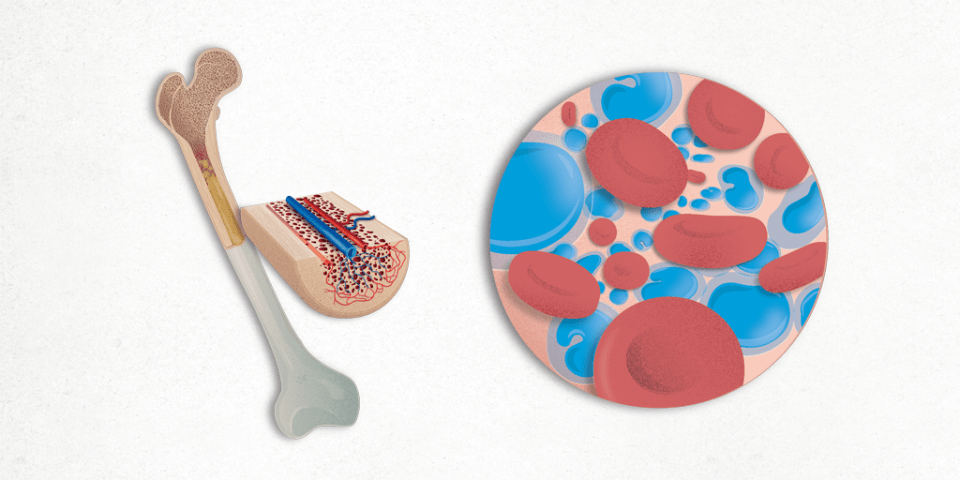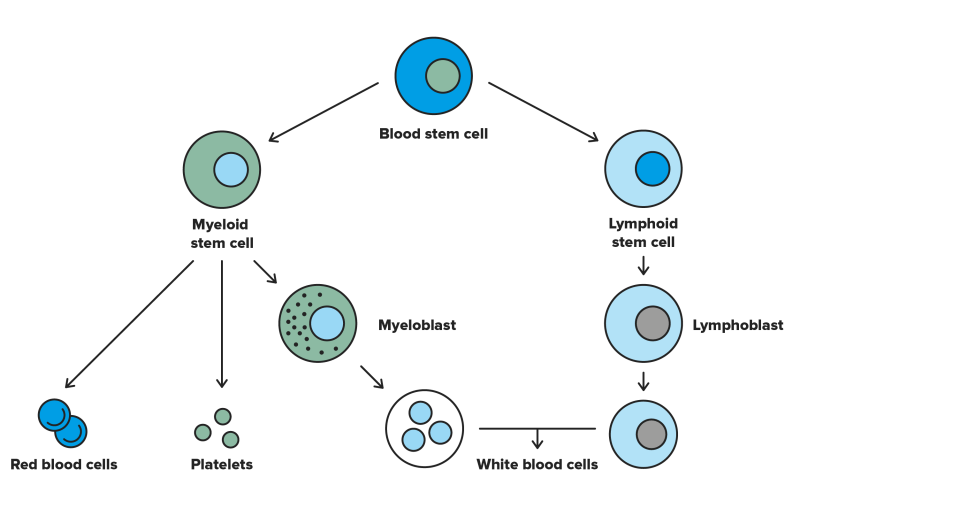- What is it?
- Stem cells
- Bone Marrow Transplant
- Living after a Transplant
- Frequently Asked Questions
A bone marrow transplant, which is now known as haematopoietic stem cell transplantation, is a procedure that aims to replace diseased bone marrow stem cells with healthy ones from a donor. The donor may be the actual patient themselves (autologous or autogenic transplant) or someone else (allogeneic transplant).
What can cause someone to need a bone marrow transplant? Pathologies such as leukaemia, lymphoma or immunodeficiency diseases can affect the bone marrow. For many patients a transplant is the only curative treatment which is why global transplant activity continues to grow.
Bone Narrow Transplant explained in first person
You should be very optimistic and very patient, because it is a long process. You must look to the positive, seek support from those around you, family, friends, hospital staff, because they will all help.
I was well aware of the fact that they were giving me a second chance.
Bone marrow anatomy
Bone marrow is the spongy, soft tissue found in the interior of long or flat bones, e.g., the hips, sternum, ribs and the skull. It is comprised of immature cells, known as haematopoietic stem cells or haematopoietic progenitor cells, that are capable of regenerating themselves, i.e., they can produce more stem cells and divide to create different types of cell found in the blood (haematopoiesis): red blood cells, white blood cells and platelets.
The blood cells produced by haematopoietic stem cells have the following functions:
Red blood cells (erythrocytes). The cells responsible for transporting oxygen from the lungs to the body’s tissues and then removing carbon dioxide from the tissues and eliminating it through respiration.
White blood cells (leucocytes). These are responsible for defending the body against external agents, such as bacteria and viruses, or internal agents and cancer cells.There are different types of leucocyte – neutrophils, eosinophils, monocytes, basophils and lymphocytes – and each fulfils a different function.
Platelets. These are aggregates that control and prevent bleeding.
Diseases that require a Bone Marrow Transplant
Diseases that may need a bone marrow transplant are those which derive from bone marrow cells (blood disorders or haematological malignancies), e.g., leukaemia, lymphoma, multiple myeloma, etc. Although less common, a BMT may be indicated for certain autoimmune diseases, such as systemic sclerosis, multiple sclerosis and Crohn’s disease.
Not all haematological malignancies require a bone marrow transplant and so it is the haematologist who will select and then carry out this type of treatment.
Types of Bone Marrow Transplant

Autologous transplants. This type of transplant involves collecting the patient’s own stem cells. Autologous transplants are generally indicated in patients with lymphoma and multiple myeloma.

Allogeneic transplants. The stem cells are collected from a healthy, compatible donor in allogeneic transplants. When the donor is one of the patient’s relatives then they are known as a related donor. It is usually a sibling or parent who tends to be 100% compatible. Not all siblings are compatible; in fact the probability of compatibility between siblings is 25% (1 in 4).
If a patient does not have a compatible sibling, then their medical team will start searching for an unrelated donor in the various international registries. These donors are called unrelated donors. The likelihood of finding a compatible donor in the registries varies from patient to patient.
The donation
When is a donor compatible?
To determine whether a donor is compatible, specialists perform a study on some proteins found in the body’s cells called human leucocyte antigens (HLAs). A blood or saliva sample must be collected from the potential donor and the recipient to discover which donor has cells that most closely match those of the recipient. As a general rule, they currently assess a minimum of 10 antigens before considering them to be a match or compatible. In some cases the medical team will accept one mismatch among the ten antigens and go ahead with the transplant (a 9/10 match).
How do they find unrelated donors?
If a patient does not have a compatible related donor, then the haematologist will look for an unrelated donor on the national donor registry. These registries provide information about each country’s voluntary donors and umbilical cord units. They will also search in other national donor registries if they cannot find a compatible donor for the recipient in their own country. This process is initiated by the haematologist. Not all countries have their own national donor registry.
What is a haploidentical donor?
One of the latest treatments is a haploidentical transplant using material from a related donor who is not a complete match (the donor and recipient share half of the 10 HLA antigens). The technique has been improved and is now a viable transplant option, all be it the third choice if there are no identical unrelated or sibling donors.
Substantiated information by:



Published: 20 February 2018
Updated: 20 February 2018
Subscribe
Receive the latest updates related to this content.
Thank you for subscribing!
If this is the first time you subscribe you will receive a confirmation email, check your inbox

